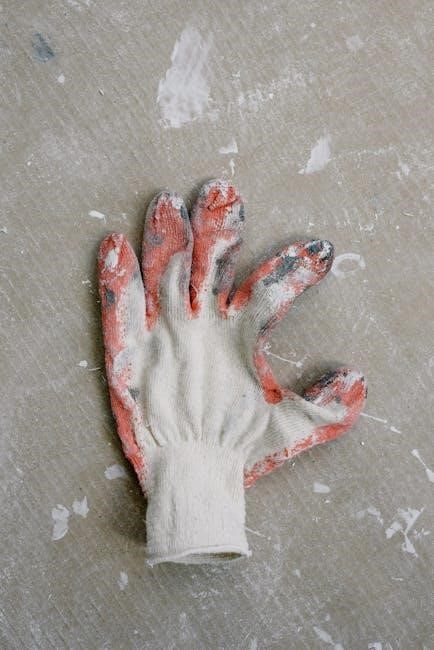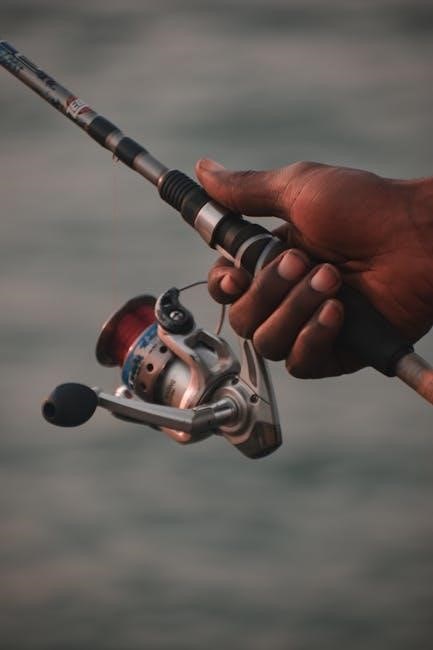Manual Transmission Jumps Out of Gear: Causes and Solutions
Is your manual transmission unexpectedly popping out of gear? This frustrating issue can stem from various mechanical problems, impacting driving safety and vehicle performance, demanding prompt diagnosis and resolution.
Experiencing a manual transmission jumping out of gear can be alarming and significantly hinder your driving experience; This issue, where the gear lever unexpectedly disengages, often points to underlying problems within the transmission system. Understanding the potential causes is crucial for effective troubleshooting and repair. Several factors, ranging from worn internal components to clutch-related issues, can contribute to this problem.
This article will explore the common culprits behind a manual transmission jumping out of gear, offering insights into diagnosing the root cause. We’ll delve into worn synchronizers, damaged gear teeth, shift fork issues, and even clutch problems. Additionally, we will discuss how fluid conditions and other external factors can contribute to this issue. By understanding these potential causes, you’ll be better equipped to address the problem and restore smooth, reliable shifting.

Common Causes of Jumping Out of Gear

Several mechanical issues can lead to a manual transmission jumping out of gear. These often involve wear or damage to internal transmission components.
Worn Synchronizers
Synchronizers are crucial components within a manual transmission, responsible for smoothly engaging gears by matching their speeds before engagement. Over time, these parts can wear down due to constant use, especially during aggressive shifting or improper clutch operation.
Worn synchronizers often exhibit symptoms like difficulty shifting into gear, grinding noises during gear changes, or the transmission jumping out of gear shortly after being engaged. This happens because worn synchronizers fail to adequately mesh the gears, allowing them to slip out of position under load.
Diagnosing worn synchronizers typically involves inspecting the transmission’s internal components, which requires specialized tools and expertise. If wear is detected, replacement is usually necessary to restore smooth and reliable gear engagement. Ignoring worn synchronizers can lead to further damage to other transmission components, resulting in more costly repairs down the line. Regular maintenance and proper driving habits can help extend the lifespan of synchronizers and prevent premature wear.
Worn Gear Engagement Teeth
The gear engagement teeth, also known as dog teeth, are the small, precisely shaped projections on the sides of the gears that interlock with the synchronizer sleeves to hold the transmission in gear. With age and constant use, these teeth can become worn, rounded, or even chipped, compromising their ability to maintain a secure connection.
When gear engagement teeth are worn, the synchronizer sleeve may not fully engage, leading to the transmission jumping out of gear, especially under load or during deceleration. This issue often manifests as a sudden disengagement, accompanied by a clunking or grinding noise.
Diagnosing worn gear engagement teeth requires a careful inspection of the gears themselves, which typically involves disassembling the transmission. If significant wear is observed, replacing the affected gears is necessary to restore proper gear engagement. Continuing to drive with worn gear engagement teeth can cause further damage to the transmission and increase the risk of a complete failure.
Worn or Damaged Gears and Bearings

Within a manual transmission, gears and bearings are critical components that enable smooth and efficient power transfer. Gears mesh together to provide different gear ratios, while bearings support the shafts on which the gears rotate, minimizing friction and ensuring proper alignment. Over time, these components can suffer wear or damage due to constant use, lubrication issues, or excessive stress.

Worn or damaged gears can exhibit rounded teeth, cracks, or pitting, leading to poor engagement and potential slippage. Similarly, worn bearings can develop excessive play or become noisy, causing vibrations and misalignment of the gears.

These conditions can cause the transmission to jump out of gear, especially under load or during shifts. Diagnosing gear and bearing issues often requires a thorough inspection of the transmission’s internal components. Replacement of worn or damaged gears and bearings is typically necessary to restore proper function and prevent further damage;
Worn Shift Fork
The shift fork is a crucial component in a manual transmission responsible for engaging and disengaging gears. It is a metal piece that moves along a shift rail, pushing the synchronizer sleeve to engage with the desired gear. Over time, the shift fork can wear down due to constant friction and pressure during gear changes. This wear can lead to several problems, including difficulty shifting, gear grinding, and, most notably, the transmission jumping out of gear.
A worn shift fork may not fully engage the synchronizer sleeve, causing the gears to slip out of position, especially under load. Symptoms of a worn shift fork include sloppy or loose shifter feel, difficulty selecting gears, and a tendency for the transmission to pop out of gear while driving.
Diagnosing a worn shift fork typically involves inspecting the transmission’s internal components. Replacement of the worn shift fork is necessary to restore proper gear engagement and prevent further damage to the transmission.
Broken Selector Spring
The selector spring, also known as a poppet spring, plays a vital role in maintaining gear engagement within a manual transmission. This spring provides the necessary force to hold the shift rail in its designated position, ensuring that the selected gear remains engaged. When a selector spring breaks or weakens, it can no longer provide adequate pressure, leading to issues with gear retention;
A broken selector spring often manifests as the transmission popping out of gear, particularly when accelerating or decelerating. The gearshift lever may also feel loose or vague, lacking the distinct “click” when engaging a gear. In some cases, the transmission may exhibit a tendency to jump out of specific gears more frequently than others, indicating a problem with the corresponding selector spring.
Diagnosing a broken selector spring typically requires inspecting the transmission’s internal components. Replacing the faulty spring is crucial to restore proper gear engagement and prevent the transmission from jumping out of gear.
Excessive End Float in the Transmission
Excessive end float refers to excessive axial movement of the shafts within the transmission. This movement can occur due to worn bearings, improperly installed components, or general wear and tear over time. When end float becomes excessive, it disrupts the precise alignment of gears and other internal components.

The misalignment caused by excessive end float can prevent gears from fully engaging, leading to the transmission jumping out of gear, especially under load or during acceleration and deceleration. This issue can also cause vibrations, noise, and premature wear of transmission components.
Diagnosing excessive end float typically involves measuring the axial movement of the transmission shafts using specialized tools. Addressing this problem usually requires a transmission rebuild, including replacing worn bearings and shimming components to restore proper end play specifications. Ignoring excessive end float can lead to significant damage and costly repairs to the transmission.

Clutch Related Issues
Clutch problems, such as slippage or wear, can significantly impact gear engagement. A malfunctioning clutch affects the transmission’s ability to stay in gear and transfer power effectively, causing issues.
Clutch Slipping
Clutch slipping arises when the clutch fails to fully engage or disengage the transmission, preventing adequate power transfer. The engine’s power struggles to reach the wheels, leading to a noticeable loss of acceleration and the potential for the car to slip out of gear.
This phenomenon typically manifests as the engine revving higher than usual without a corresponding increase in speed. It is often noticed during acceleration or when climbing hills, as the clutch struggles to maintain its grip;
Several factors contribute to clutch slippage. Worn clutch plates are a primary cause, as diminished friction material reduces the clutch’s ability to hold firmly. Contamination from oil or grease can also compromise the clutch’s grip. Adjustments may be necessary, or complete clutch replacement might be the remedy.
Ignoring clutch slippage can lead to further damage, including overheating and accelerated wear. Addressing this issue promptly is crucial for maintaining the health of the transmission and overall vehicle performance.
Worn Clutch Plates
Worn clutch plates represent a common culprit when a manual transmission jumps out of gear, primarily due to the reduced friction coefficient. Over time, the friction material on the clutch disc wears down, diminishing its ability to effectively grip the flywheel and pressure plate.
This wear leads to clutch slippage, wherein the engine spins faster than the transmission input shaft, preventing full power transfer to the wheels. The weakened grip can cause the transmission to pop out of gear, especially under load or during acceleration.
Signs of worn clutch plates include a high clutch pedal engagement point, difficulty shifting gears, and a burning smell emanating from the clutch housing. A visual inspection of the clutch plates will reveal reduced friction material and potential damage.
Replacing worn clutch plates with a new clutch kit is essential to restore proper clutch engagement and prevent the transmission from jumping out of gear. Ignoring this issue can lead to further damage to the flywheel and other transmission components.
Bad Pilot Bearing
A failing pilot bearing, though seemingly small, plays a vital role in the smooth operation of a manual transmission. Located within the center of the flywheel, the pilot bearing supports the transmission’s input shaft, maintaining alignment and reducing vibrations.
When the pilot bearing deteriorates, it can cause excessive play and misalignment between the engine and transmission. This misalignment introduces vibrations and erratic movements, impacting the input shaft’s stability. The resulting instability can cause the transmission to jump out of gear, especially during acceleration or deceleration.
Symptoms of a bad pilot bearing include unusual noises when the clutch pedal is depressed, difficulty shifting gears, and vibrations felt through the shifter. Replacing the pilot bearing, often done during a clutch replacement, is crucial to ensure proper alignment and prevent future transmission issues.
Ignoring a bad pilot bearing can lead to further damage to the input shaft, clutch, and even the transmission itself. A worn bearing can also cause premature wear on other components due to increased vibration.

Other Potential Problems
Beyond internal transmission components, other factors can contribute to gear slippage. These include using inadequate oil grades, and issues within automatic transmissions, such as worn transmission bands, each requiring specific diagnostic approaches.
Inadequate Grade of Oil
Using the incorrect grade of oil in your manual transmission can significantly impact its performance and contribute to the gear jumping out issue. Transmissions rely on specific lubricant properties to ensure smooth operation, reduce friction, and maintain proper gear engagement.
When the oil viscosity is not as specified, it can lead to inadequate lubrication of the gears, synchronizers, and bearings. This lack of proper lubrication increases friction, causing heat and wear. The increased friction can prevent gears from fully engaging, making them prone to slipping out of position, especially under load.

Moreover, the wrong oil can affect the synchronizers’ ability to properly mesh the gears during shifting. Synchronizers require a certain level of friction to align gear speeds before engagement. If the oil is too slippery, the synchronizers may not function effectively, resulting in gear grinding and potential disengagement. Always consult your vehicle’s manual.
Transmission Bands (Automatic Transmissions)
While this discussion focuses on manual transmissions, it’s important to briefly address a similar component in automatic transmissions: transmission bands. Although manual transmissions don’t use bands, understanding their function in automatics helps illustrate how internal wear can cause gear slippage.
In automatic transmissions, bands are metal straps that clamp onto rotating drums to engage specific gears. Over time, these bands can wear out, stretch, or break. When a band fails, it may not fully engage the corresponding gear, leading to slipping or complete loss of that gear. This is similar to a manual transmission jumping out of gear due to worn components.
Symptoms of worn transmission bands in an automatic transmission include delayed or harsh shifting, slipping during acceleration, or the inability to shift into certain gears. Regular maintenance, including fluid changes, can help prolong the life of transmission bands. However, replacement may be necessary if wear becomes excessive.